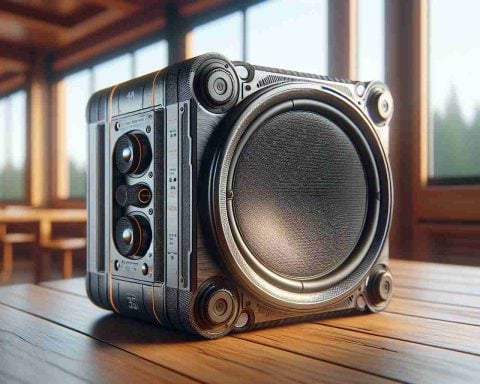In a groundbreaking advancement, EHang Holdings (Nasdaq: EH) has made significant strides in electric vertical take-off and landing (eVTOL) aircraft technology. The company recently revealed a new solid-state battery developed alongside Inx Energy Technology, ushering in a new era for their EH216-S flying vehicles.
The EH216-S has achieved a historic milestone: it became the first autonomous passenger-carrying eVTOL to accomplish a sustained flight utilizing a solid-state battery. This flight lasted an impressive 48 minutes, showcasing the potential of integrating cutting-edge battery technology into air mobility.
The newly developed battery boasts an energy density of 480Wh/kg, providing a remarkable 60%-90% improvement in flight endurance. Additionally, the battery enhances operational safety with improved thermal stability and reduced flammability, alongside being maintenance-free. This innovation does not only promise longer flights but also ensures enhanced safety measures, mandatory for piloting passengers autonomously.
EHang’s goals extend even further. By late 2025, the company aims for large-scale production of these certified batteries, paving the way to increase flight times up to 60 minutes. This plan marks a pivotal move towards a sustainable and efficient urban air mobility solution.
This technological leap by EHang signals a transformative shift in urban transportation, propelling the industry closer to a future where eVTOLs become a commonplace reality. The commitment to advancing power solutions underscores EHang’s leading position in the rapidly evolving world of autonomous air travel.
The New Frontier in Urban Air Mobility: How EHang’s Breakthrough Affects Our Future
In the rapidly evolving landscape of urban transportation, EHang Holdings is leading the charge with its remarkable advancements in electric vertical take-off and landing (eVTOL) technology. While the focus has been on their successful integration of solid-state batteries into the EH216-S flying vehicles, there are equally compelling aspects of this innovation that merit our attention.
Revolutionizing Urban Transport: More Than Meets the Eye
Although EHang’s successful demonstration of a 48-minute autonomous flight using a solid-state battery is impressive, it’s essential to explore how this feat influences the broader agenda of sustainable urban development. This breakthrough could potentially reduce urban congestion and transform commutes, making bustling cityscapes more manageable. The resulting decrease in vehicle emissions might inspire other industries to adopt greener technologies, accelerating our shift toward sustainability.
Interesting Facts About Solid-State Batteries
Solid-state batteries represent a leap over traditional lithium-ion technology. Boasting an energy density of 480Wh/kg and improved thermal stability, these batteries offer a safer and more efficient power source. A key benefit is their reduced flammability, a crucial asset for passenger flights where safety is paramount. Furthermore, these batteries are virtually maintenance-free, making them an ideal choice for autonomous systems expected to operate with minimal human intervention.
Balancing Benefits and Downsides
Despite their promise, solid-state batteries still face challenges. Manufacturing them on a large scale is an ambitious endeavor, as the technology is currently costly and complex to produce. While EHang aims to commence large-scale production by late 2025, questions about feasibility remain. Can these batteries be produced affordably enough to make eVTOLs a viable mode of transport for the masses?
Controversies and Debates
The eVTOL industry itself is no stranger to controversy. The idea of autonomous passenger flights raises concerns about safety and regulation. How will air traffic control systems need to evolve to handle skies filled with autonomous vehicles? There’s also the matter of societal acceptance—are people ready to trust machines with their lives in such an intimate setting?
Looking Toward the Future
The implications of EHang’s advancements reach far beyond convenience. This progress could herald a new era of transportation, potentially reducing traffic and pollution while changing the very structure of urban environments. Nevertheless, these developments prompt essential questions about infrastructure, regulation, and public adoption.
Will urban areas be capable of accommodating these new technologies? How quickly can regulations adapt to ensure safety without stifling innovation? The answers will play a critical role in shaping the future of urban transportation.
For those interested in exploring more about transformative technologies and sustainable city planning, consider visiting EHang’s official site or other reliable tech and innovation hubs.
EHang has not only propelled eVTOL technology forward but has sparked a necessary discussion about the future of urban mobility. As we stand on the brink of technological revolution, it’s essential we consider all facets of these advancements and their potential long-term impact on our daily lives.



















